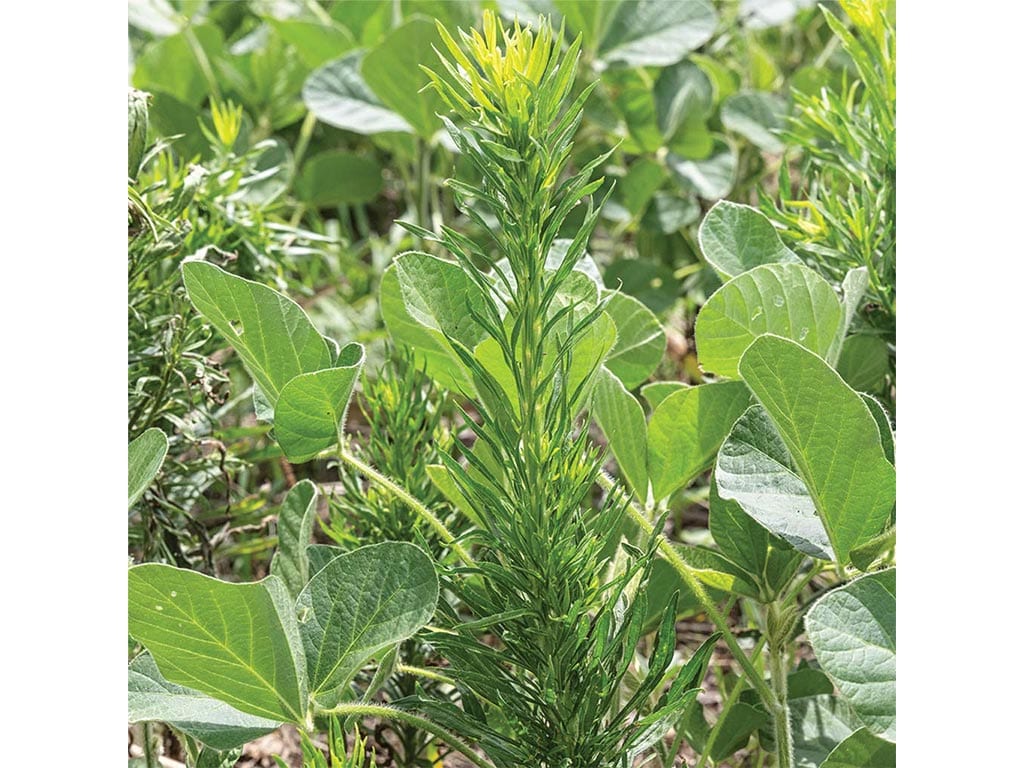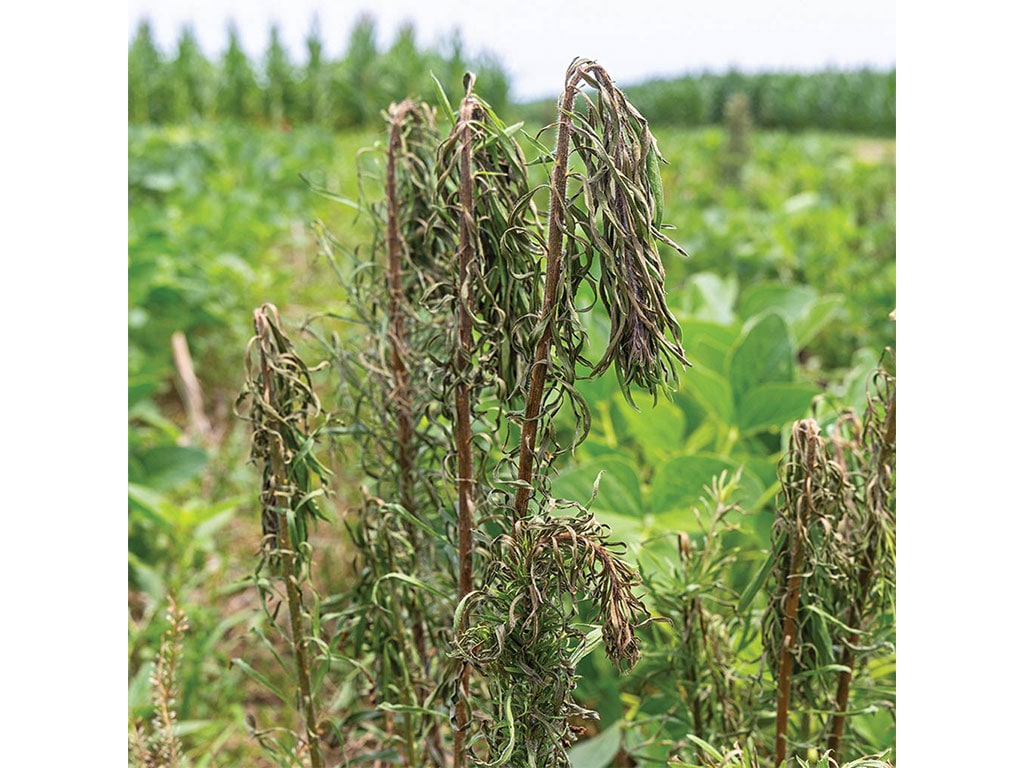Agriculture January 01, 2024
Zap! Go the Weeds
.
Electricity is the latest tool in the fight against weeds.
It was a lovely July day for a witches' brew of marestail and waterhemp to tower over soybeans at the University of Missouri's (MU) Bradford Center.
Little did this dastardly duo know this day was its last. A seemingly innocent tractor front-mounted copper bar teeming with 110,000 watts of electricity grew more menacing as it approached.
HMMMM...BUZZZZ...ZAPPPP!
Weeds, meet thy maker: Death by electrocution.
Herbicides have been, are, and will always be part of weed management. These days, though, they don't always work. Globally, weeds resist 21 of the 31 known herbicide sites of action, and 167 different herbicides, according to weedscience.org. Herbicide-resistant weeds have been reported in 99 crops in 72 countries.
Companies commercialized the last new soybean herbicide site of action—HPPD inhibitors (Group 27) around 25 years ago. Several companies are researching soybean herbicides with new sites of action, but the earliest they will be available is the end of this decade.
That's prompting weed scientists to test alternative ways to complement herbicides. MU trials show weed electrocution may play a part in an integrated soybean weed management program. They tested The Weed Zapper (theweedzapper.com) out of Sedalia, Missouri, in 2020 and 2021.
Above. On the left, vibrant green marestail reigned in July in soybean plots at the University of Missouri's Bradford Center. After The Weed Zapper Annihilator passed through, though, the marestail soon died.
"As far as weed efficacy is concerned, we are pleased with what we see in soybeans," says Kevin Bradley, MU Extension weed specialist. By killing weeds before they set seed, electrocution also helps nix future infestations, he adds.
There's a twist, though.
"This is not a weed management tool," says Bradley. "This is a weed rescue tool. It is for use when something has gone wrong [with herbicides] and you are trying to kill [weed] escapes."
In this context, MU tests show control of broadleaves that include waterhemp, giant ragweed, common ragweed, and marestail tallies 90% or more.
"It is comparable to what you would get with a [postemergent] herbicide," says Bradley.
Postemergent herbicides work best on weeds 4 inches or smaller. The script flips with electrocution.
"It's more effective on bigger weeds," he says. "The weed height has to be above the canopy. If you would happen to come into contact with the soybeans, you would get yield loss. But the whole premise is to electrocute weeds above the canopy and not touch the soybean canopy."
Grasses are electrocution's weak point. Smaller surface area for contact or because grasses contain less water may be reasons for reduced effectiveness, say MU weed scientists. Officials for The Weed Zapper say a two-pass application boosts effectiveness on Johnsongrass. Foxtail and other grasses are killed with two passes spaced two to three weeks apart.
Users need to be aware they are working with electricity. However, multiple safety features have been built into The Weed Zapper, say company officials.
The required tractor horsepower is its biggest limitation, says Bradley. Depending on the electricity generated, a 225- to 275-horsepower tractor is required to pull a front-mounted 40-foot boom for the Annihilator series of The Weed Zapper.
Boom width is also a drawback, he says. The current maximum boom width for the Annihilator series is 40 feet.
"If you have a conventional soybean farmer who farms several thousand acres, the 40-foot boom is not big enough, especially if you compare it to sprayers with 90-foot booms," Bradley says. The company does offer a self-propelled unit with its Terminator series with a 60-foot boom.
Excellent potential for weed electrocution exists in high-value vegetable and fruit crops, says Bradley.
"In crops like pumpkins, cantaloupes, and watermelons, there are some pre-emergent chemicals that keep fields clean for a little while, but there are no effective postemergent chemicals," he says. ‡
Read More

AGRICULTURE, SPECIALTY/NICHE
It's that Simple
How a vacation changed his operation and whole outlook on farming.

AGRICULTURE, SUSTAINABILITY
Taking DIY to the Next Level
Pest control developed specifically for your farm.



